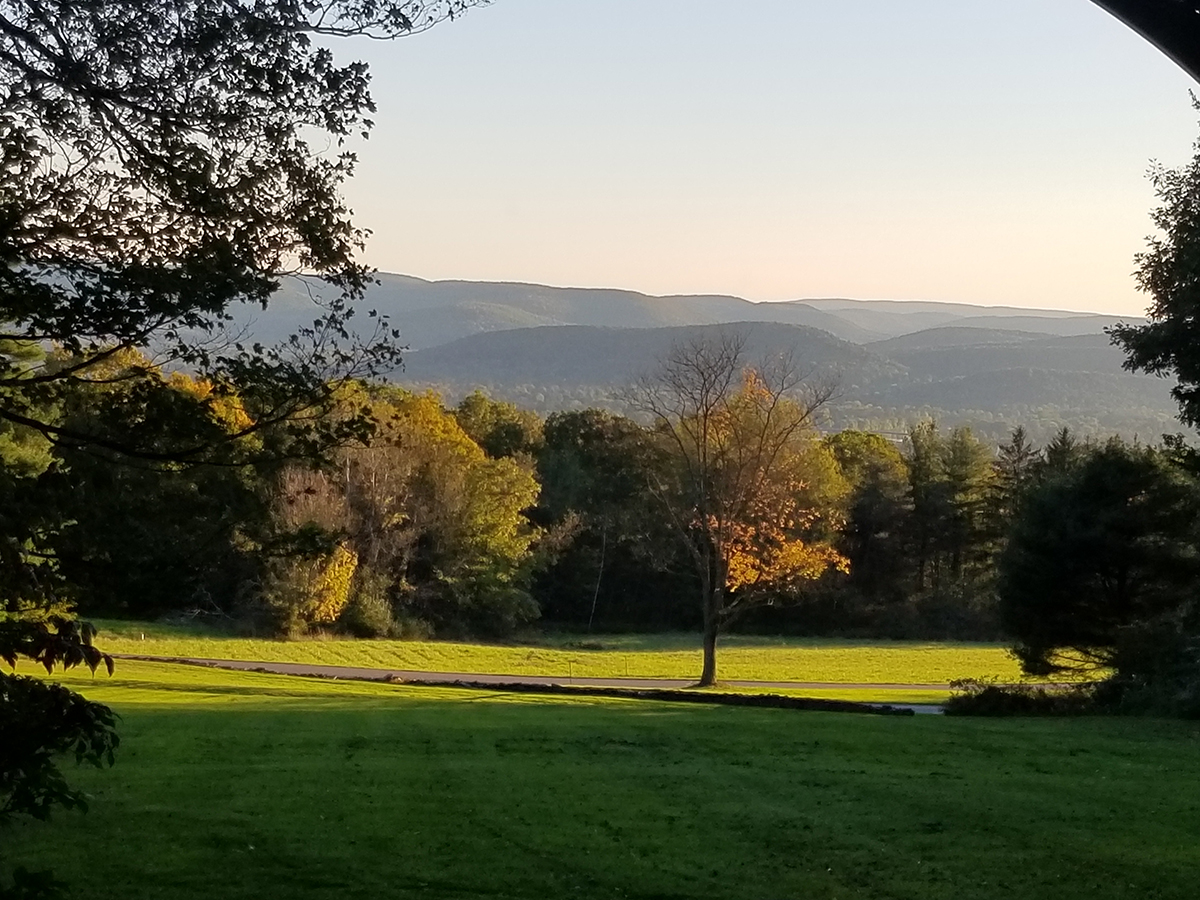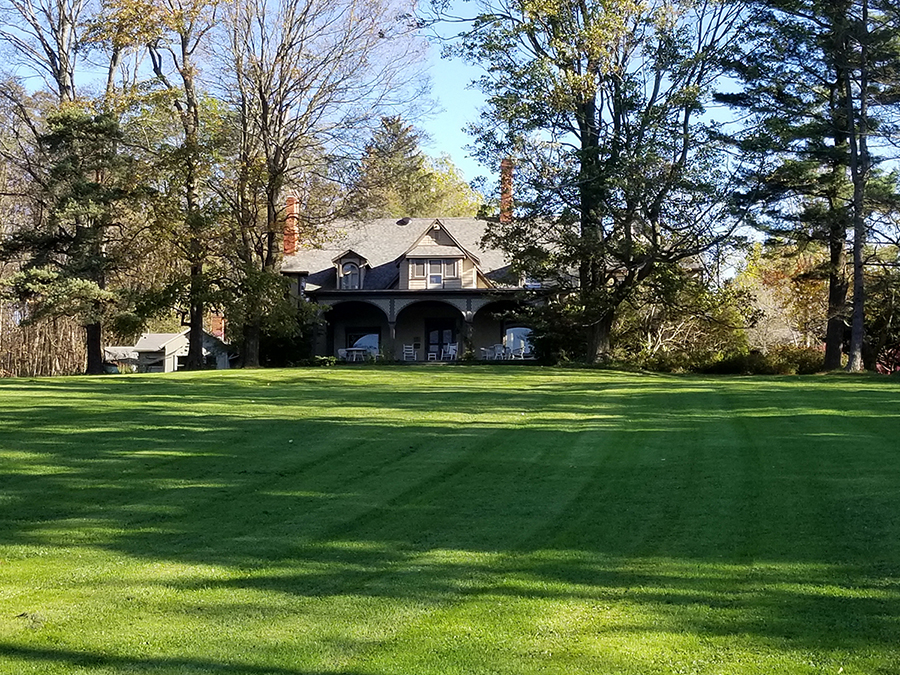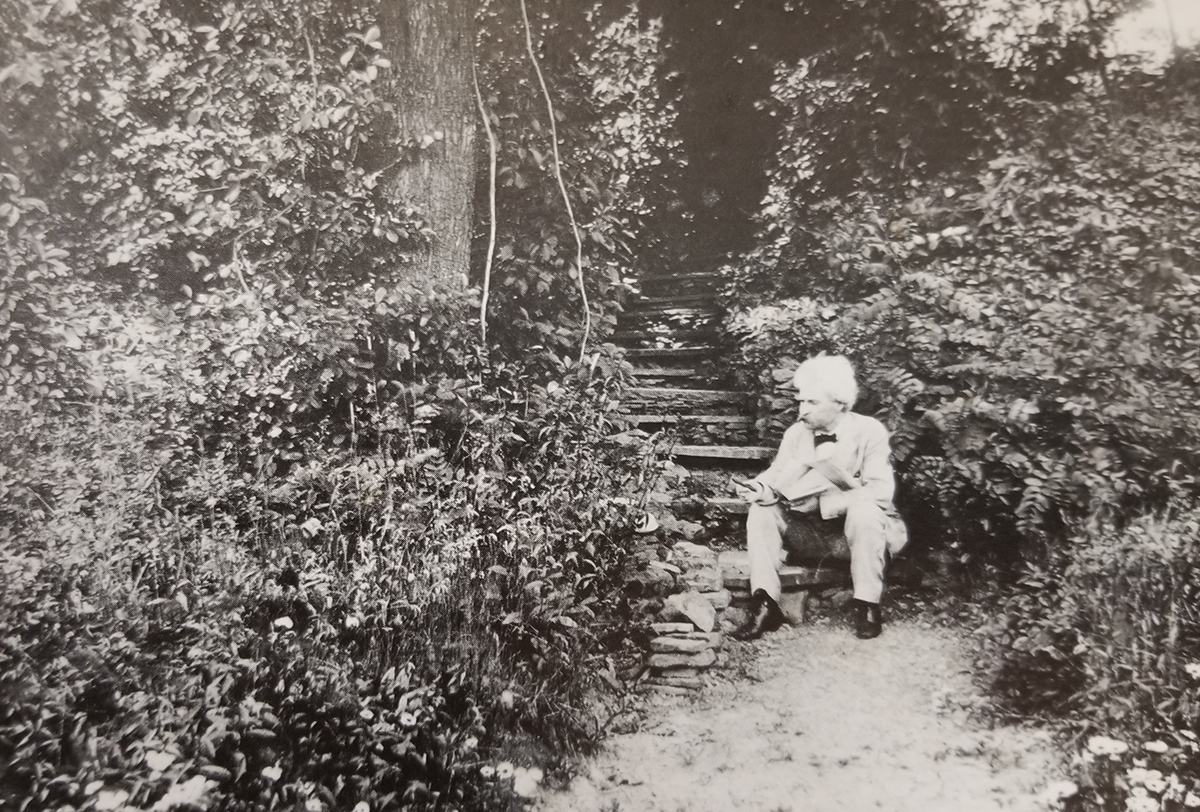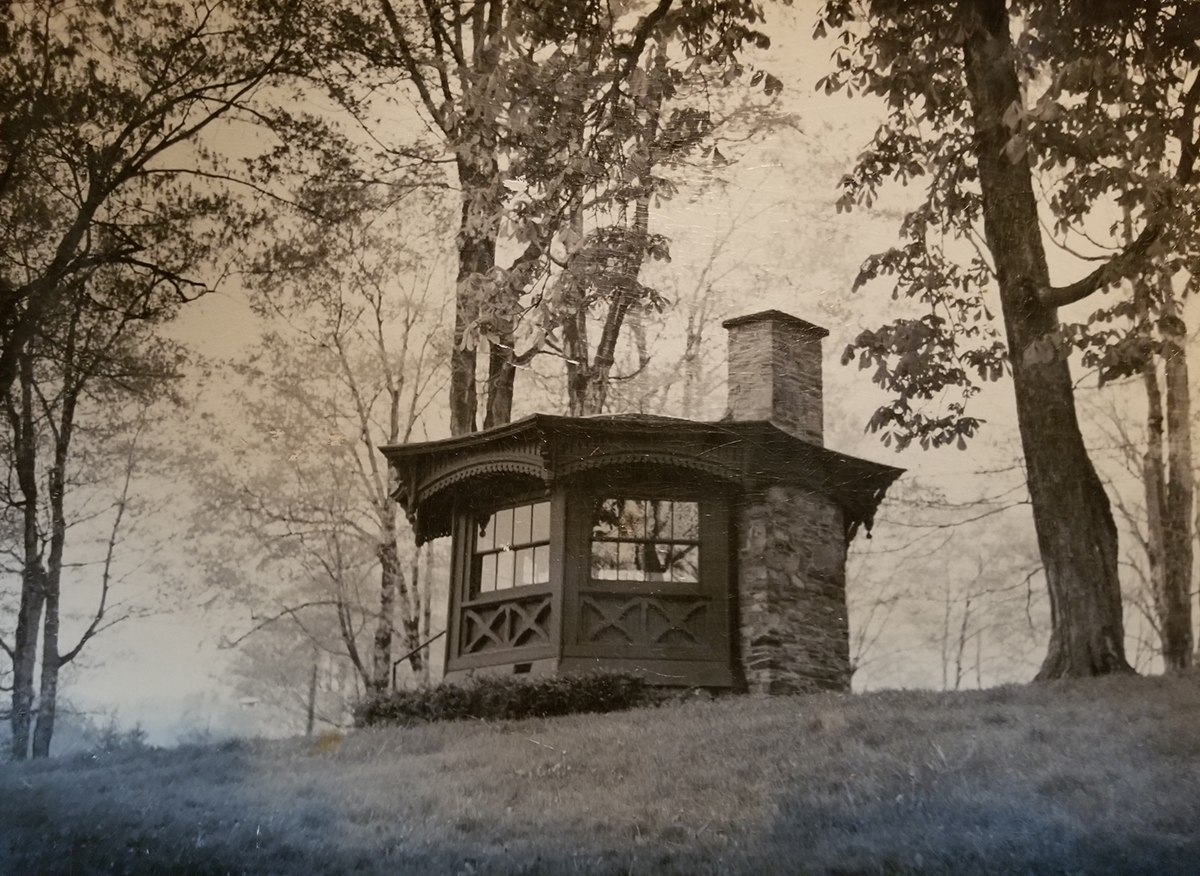



The six-acre property known as the Quarry Farm was the summer home of Samuel Clemens and his family between 1870 and 1890. Built in 1869 by his father-in-law, Jervis Langdon, Clemens (also known as Mark Twain) wrote several of his most famous novels from an octagonal study perched atop a former slate quarry on the property. Jervis Langdon died in 1870, but the farm remained in the family until the early 1980s, passing through several generations and serving as a gentleman’s farm, a dairy, a suburban home, and lastly as a businessmen’s retreat. In 1983, Elmira College acquired the property, including six acres, the farmhouse, barn, and small outbuilding, and proceeded to transform the property into an academic center for Mark Twain scholars.
Preservation of the buildings and land were central to this transformation, beginning with the development of an Historic Structure Report for the farmhouse, completed in 2019 by Johnson-Schmidt Architects. In 2021, the college engaged Martha Lyon Landscape Architecture, LLC (MLLA) to prepare a complementary study of the grounds, a Cultural Landscape Report (CLR). MLLA researched and documented the physical changes to the land, from its earliest days of human habitation to the present; established a period of significance; and assessed landscape conditions today. The report culminated in a treatment plan that will help guide the college in its effort to preserve the landscape so that it more closely reflects the period associated with Clemens and his family.
Preservation of the buildings and land were central to this transformation, beginning with the development of an Historic Structure Report for the farmhouse, completed in 2019 by Johnson-Schmidt Architects. In 2021, the college engaged Martha Lyon Landscape Architecture, LLC (MLLA) to prepare a complementary study of the grounds, a Cultural Landscape Report (CLR). MLLA researched and documented the physical changes to the land, from its earliest days of human habitation to the present; established a period of significance; and assessed landscape conditions today. The report culminated in a treatment plan that will help guide the college in its effort to preserve the landscape so that it more closely reflects the period associated with Clemens and his family.